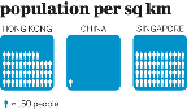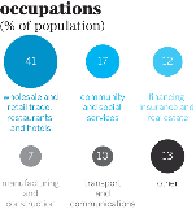Travel Reference
In-Depth Information
New Waves
Protest marches, often feisty and carnival-esque, take place just about every other Sunday in
Hong Kong. Young people are increasingly coming to the forefront of resistance, such as
when they spearheaded tens of thousands of people, including parents, to take to the streets
in July 2012 to protest the introduction in schools of 'national education' classes that they
fear will lead to political brainwashing.
At the same time, Hong Kong is still the only place in the whole of China where the
crackdown on the Tiān'ānmén pro-democracy uprising of 4 June 1989 can be openly com-
memorated. In 2014 a massive crowd (180,000 according to organisers; 99,500, to police)
turned out for the 25th anniversary of the 4 June candlelight vigil. As Běijīng desperately
searches for a formula of soft power to project on the international stage, the answers it
needs may well lie in the rebellious tendencies of its semi-autonomous territory in the south.
Part of the city's growing assertion of its own distinctive identity is an increasing drive
among the young population to preserve Hong Kong's social heritage. Funky collectives
have flowered in the past few years to document the social history of storied neighbour-
hoods caught in the tide of urban redevelopment, such as Wan Chai and Yau Ma Tei. The
perennial tussle for space in the city has also seen the growth of alternative music venues
and urban farms in old factory buildings. As always, there's more than meets the eye in this
pulsating metropolis, which has time and again shown an extraordinary ability to rebound,
adapt and excel.


